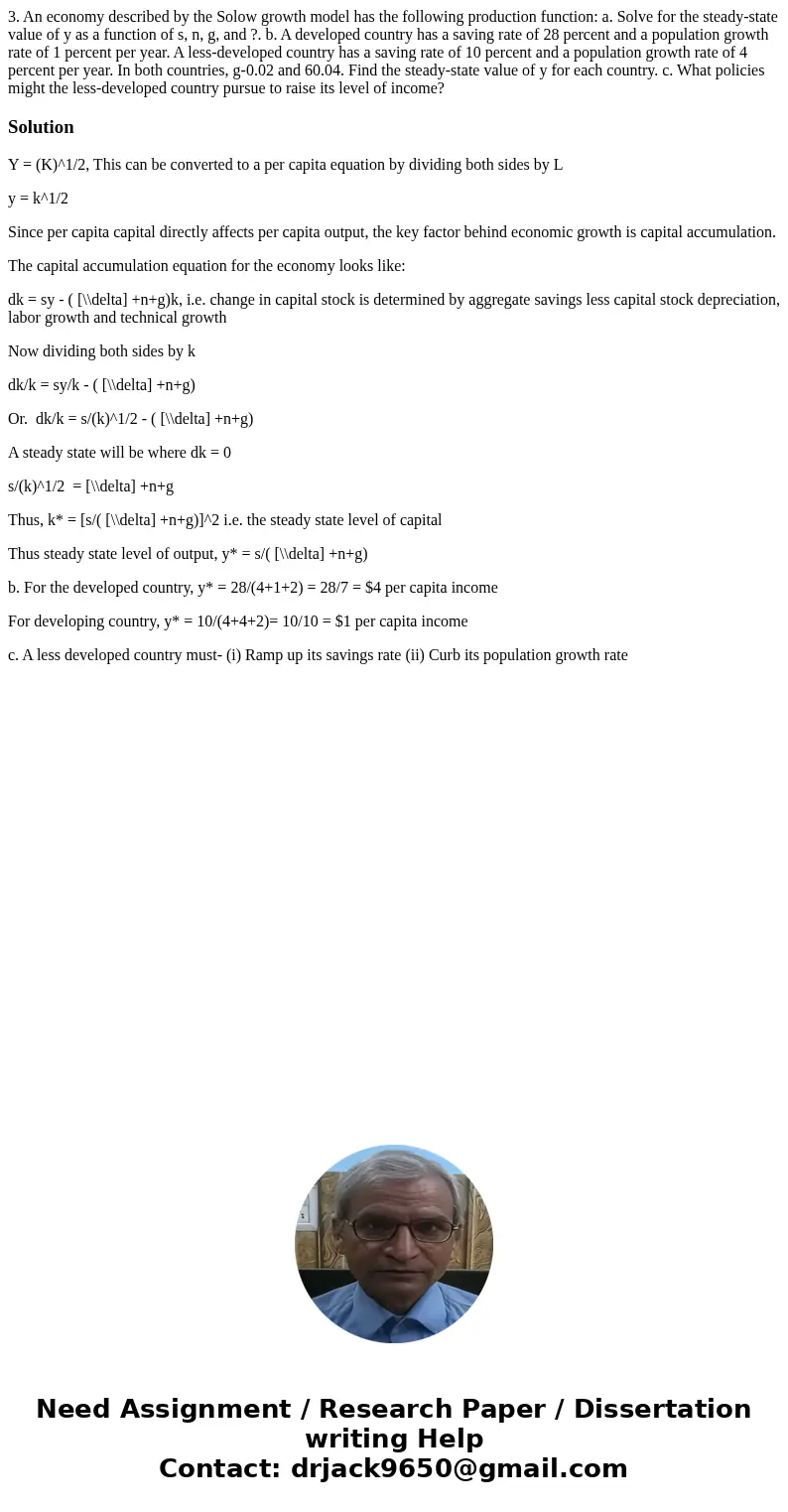3 An economy described by the Solow growth model has the fol
Solution
Y = (K)^1/2, This can be converted to a per capita equation by dividing both sides by L
y = k^1/2
Since per capita capital directly affects per capita output, the key factor behind economic growth is capital accumulation.
The capital accumulation equation for the economy looks like:
dk = sy - ( [\\delta] +n+g)k, i.e. change in capital stock is determined by aggregate savings less capital stock depreciation, labor growth and technical growth
Now dividing both sides by k
dk/k = sy/k - ( [\\delta] +n+g)
Or. dk/k = s/(k)^1/2 - ( [\\delta] +n+g)
A steady state will be where dk = 0
s/(k)^1/2 = [\\delta] +n+g
Thus, k* = [s/( [\\delta] +n+g)]^2 i.e. the steady state level of capital
Thus steady state level of output, y* = s/( [\\delta] +n+g)
b. For the developed country, y* = 28/(4+1+2) = 28/7 = $4 per capita income
For developing country, y* = 10/(4+4+2)= 10/10 = $1 per capita income
c. A less developed country must- (i) Ramp up its savings rate (ii) Curb its population growth rate

 Homework Sourse
Homework Sourse